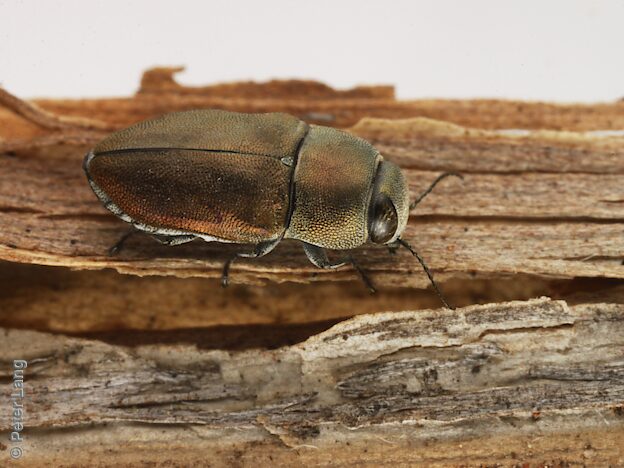
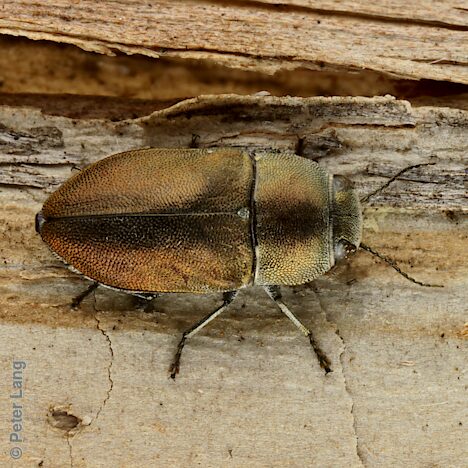
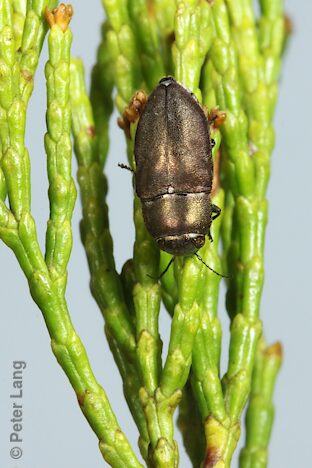
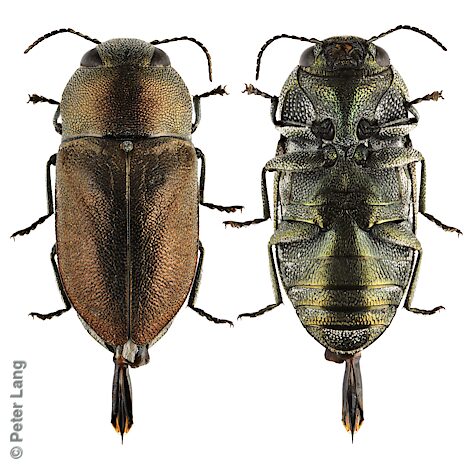
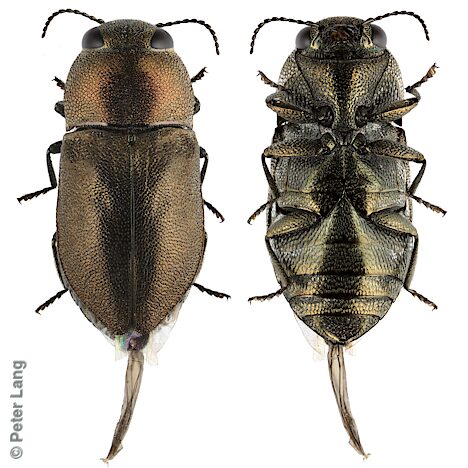
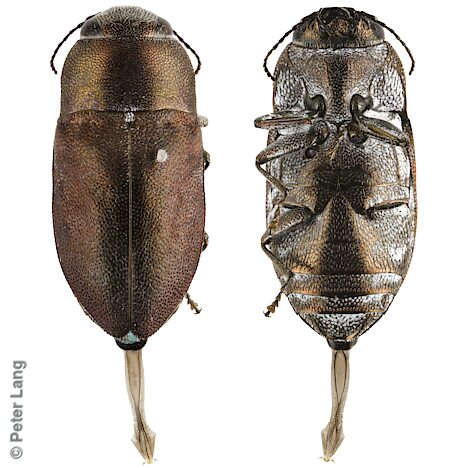
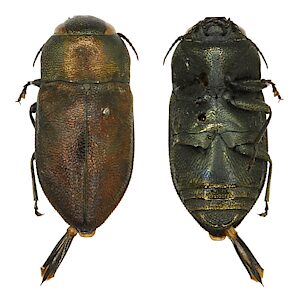
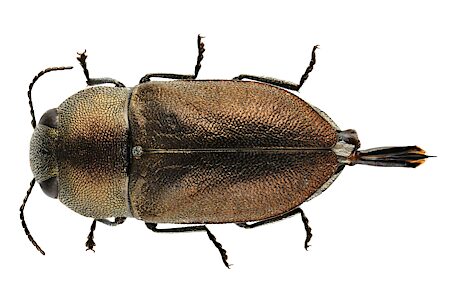
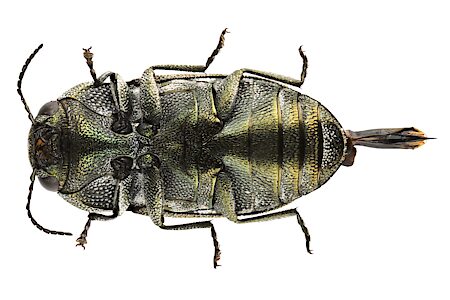
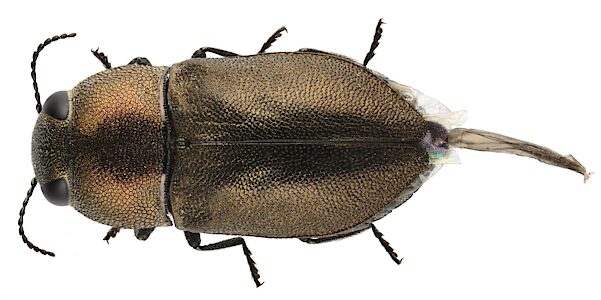
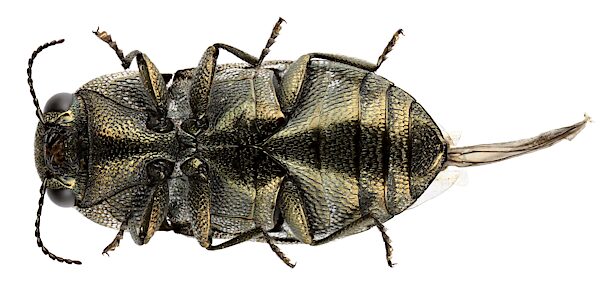
size¹:
×
2.4 mm











| male | female | |||||
|---|---|---|---|---|---|---|
| L1 | 5.0 | 4.15 – 6.2 | n = 28 | 5.5 | 3.95 – 6.7 | n = 16 |
| L2 | 4.8 | 4 – 5.9 | n = 28 | 5.4 | 4.55 – 6.4 | n = 15 |
| W | 2.3 | 1.95 – 2.65 | n = 28 | 2.5 | 1.8 – 3 | n = 16 |
| Legend | L1 | length from clypeus/frons to elytral apex (mean, range, sample size) |
| L2 | length from anterior of edge of eyes to elytral apex | |
| W | maximum width with elytra fully closed |
Differs from Anilara sp. Broombush in its greenish to golden (-bronze) colouration on the head and pronotum, and especially on much of the ventral side; also the pronotum is less strongly tapered towards the head and often at its widest around mid-length rather than at the base; the outline of the eltra is more rounded; and the aedeagus parameres are more extensively darkened at their apex and bear a (small) pre-apical lateral projection.
This phrase name Anilara sp. Golden bronze was first applied to a single specimen that I collected on Kangaroo Island in 2010. Later collections were formerly treated on these pages as a separate taxon, Anilara sp. Dune ridge. That name was applied to a single live specimen collected from Broombush Melaleuca uncinata growing on a sand dune in Billiatt Conservation Park in the in the Murray region. It was later also used for two matching dead adult remains extracted from stems of M. uncinata in the South-east region.
In 2022 large series of specimens were obtained as breedng records in Salt Paper-bark Melaleuca halmaturorum from north of Adelaide and the SE Region, as well as from M. uncinata in the SE Region. Using this better sample, it became clear that both these and the A. sp. Dune ridge specimens were conspecific with Anilara sp. Golden bronze. Although poorly represented by collections at the SA Museum, the species appears to be quite abundant and widespread. I have also identified it amongst collections of Anilara from WA.
The general form of its aedeagus suggests a close relationship with Anilara sp. Broombush, but there are significant differences in detail. Also, A. sp. Broombush has only been collected from M. uncinata growing on stony hills, but when A. sp. Golden bronze uses the same host species, it is growing on dunes or flats.
| Legend | P.J.Lang collection vouchered records | |
| other private collection or museum specimens, or sightings |
|
|
|
|
|
|
|
|
|
|
|
|
|
||||||||||||||||||||||||||||||||||||||||||||||||
|
|
|
|
|
|
|
|
|
|
|
|
|
||||||||||||||||||||||||||||||||||||||||||||||||
| Jul | Aug | Sep | Oct | Nov | Dec | Jan | Feb | Mar | Apr | May | Jun |
| Legend | live emerged adults, count > median value of 3 per quarter month | |
| live emerged adults, count <= median value of 3 | ||
| live non-emerged adults only, for that quarter month | ||
12 | number of active beetles for that quarter month |
| beetles | sites | SA regions¹ | family | position on host plant | ||
| Callitris gracilis | 1 | 1 | MU | C | ||
| Callitris rhomboidea | 1 | 1 | KI | C | ||
| Callitris verrucosa | 1 | 1 | EP | C | ||
| Eucalyptus sp. | 1 | 1 | EP | M | ||
| Melaleuca uncinata | 1 | 1 | MU | M |
| Legend | beetles | count of beetles collected from, or sighted on, host plant taxon |
| sites | count of major sites (unique 10 km grid cells +/- some distinct approximate localities) | |
| Plant names in green are hyperlinked to a matching host species page with plant photos. | ||
| Code | beetles | % | host plant taxa | |
| C | Cupressaceae | 3 | 60% | 3 |
| M | Myrtaceae | 2 | 40% | 2 |
| position | beetles | sites | |
| on flowering plant | 1 | 1 | |
| on foliage or non-flowering plant | 3 | 3 | |
| on plant (unspecified) | 1 | 1 |
| colour | beetles | sites | SA regions¹ | |
| dark violet | 1 | 1 | SL |
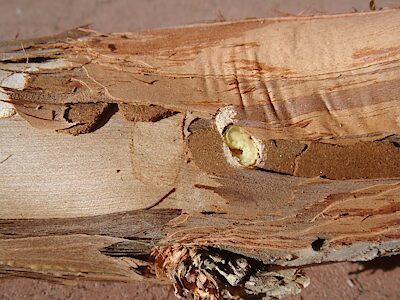
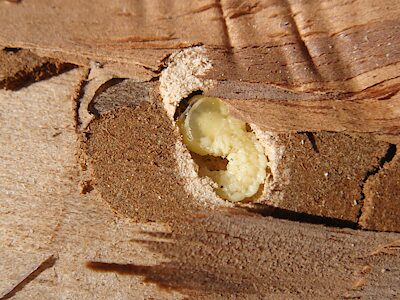
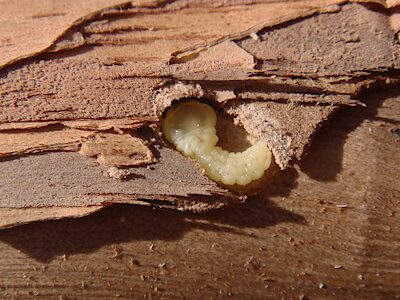
 stem, SE, photo by A.M.P. Stolarski, shallow larval excavation with pupal chamber arrowed, N1_x300.jpg)
 dead stem being wedged apart, SE, photo by A.M.P. Stolarski, N2_x300.jpg)
 dead stem, SE, photo by A.M.P. Stolarski, N3_x300.jpg)
 dead stem, SE, photo by A.M.P. Stolarski, N4_x300.jpg)
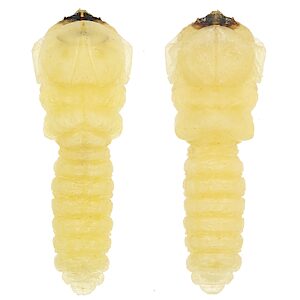
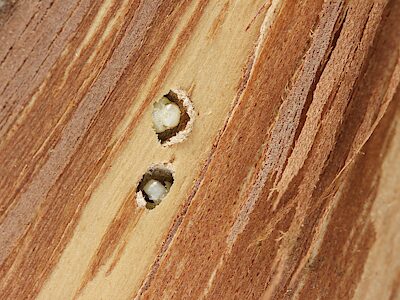
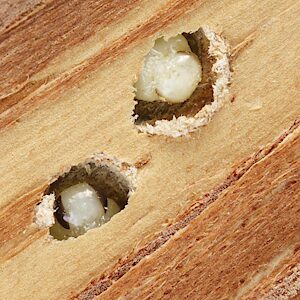
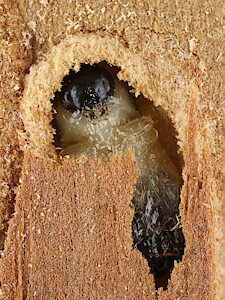
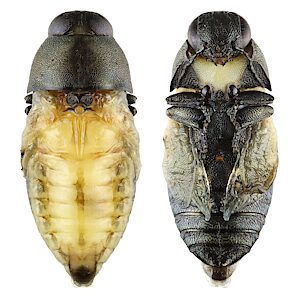
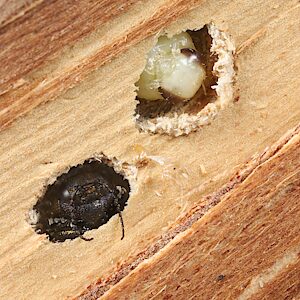
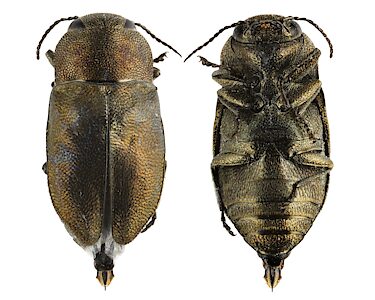
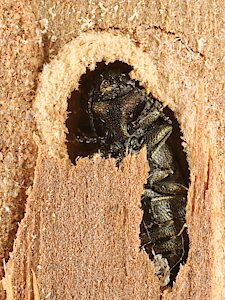
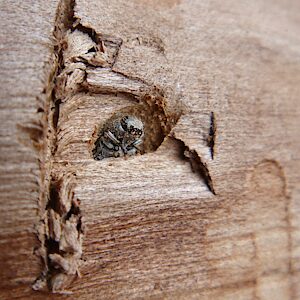
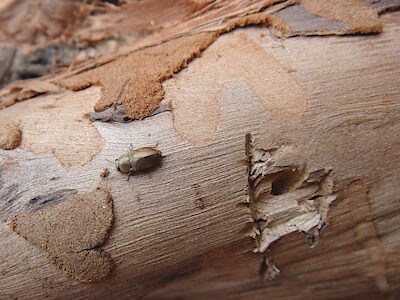

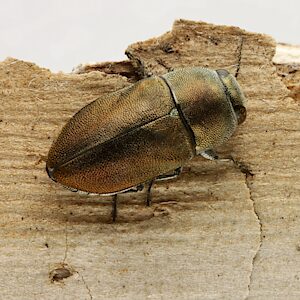
, SE, photo by A.M.P. Stolarski, D1_x300.jpg)
, SE, photo by A.M.P. Stolarski, D2_x300.jpg)
, SE, photo by A.M.P. Stolarski, D3_x300.jpg)
, SE, photo by A.M.P. Stolarski, D4_x300.jpg)
, SE, photo by A.M.P. Stolarski, D5_x300.jpg)
, SE, photo by A.M.P. Stolarski, D6_x300.jpg)
 after removal of bark and frass, B0.5_x300.jpg)
, SE, photo by A.M.P. Stolarski, B1_x300.jpg)
, SE, photo by A.M.P. Stolarski, B2_x300.jpg)
, SE, photo by A.M.P. Stolarski, exit hole, B3_x300.jpg)
, SE, photo by A.M.P. Stolarski, exit hole, B4_x300.jpg)
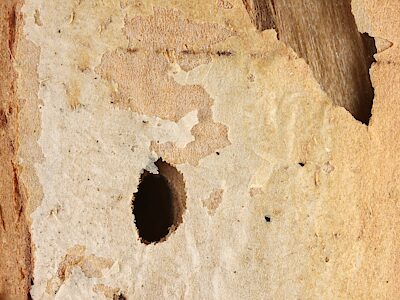
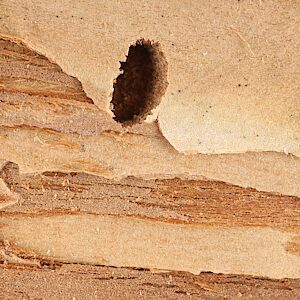
| records | sites | SA regions¹ | family | adult dead | adult ex billet | adult ex pupa | pupa | larva | |
| Melaleuca halmaturorum | 66 | 2 | SL, SE | M | 41 | 7 | 7 | 11 | |
| Melaleuca uncinata | 6 | 1 | SE | M | 2 | 1 | 3 |
| Legend | records | count of breeding adults, pupae and larvae |
| sites | count of major sites (unique 10 km grid cells +/- some distinct approximate localities) | |
| adult | live = extracted alive; dead = extracted dead as intact or fragmentary remains; ex billet = reared and emerged from stored sections of host; ex pupa = reared from sampled pupa | |
| pupa | extracted pupa; pupa ex larva = reared pupa from larva | |
| larva | extracted larva (any stage including prepupa) | |
| gall (only) | hatched or unhatched gall identified by form and position rather than contents | |
| Plant names in green are hyperlinked to a matching host species page with plant photos. | ||
| Code | records | % | host plant taxa | |
| M | Myrtaceae | 72 | 100% | 2 |
| position | records | sites | adult dead | adult ex billet | adult ex pupa | pupa | larva | |
| dead stem | 72 | 3 | 2 | 42 | 7 | 7 | 14 |
There are remarkably few adult host records, and more sampling by sweeping on, and in vicinity of, known larval host plants is needed.
Broombush Melaleuca uncinata and Salt Paper-bark Melaleuca halmaturorum are established as larval hosts, supported by large numbers of individuals. Both are paperbark tea-trees and the larvae feed and construct their pupal chambers (at varying angles) very close to the stem surface, immediately underneath thin layers of adhering papery bark.
There is circumstantial evidence that other Melaleuca species with papery bark may be larval hosts also. Slender Honey-myrtle M. gibbosa and Dune Honey-myrtle M. eleuterostachya were present where single individuals were collected (from Callitris foliage) at a Kangaroo Island, and a Googs Track site, respectively.
One of the specimens I identified from WA (M. Powell, Melaleuca Park, 5 Dec 1986) was cut from Stout Paperbark Melaleuca preissiana, a teatree of sandy soils and swamps.
| ¹ Legend | regions | SA State Herbarium regions (map) EA: Eastern, EP: Eyre Peninsula, FR: Flinders Ranges, GT: Gairdner-Torrens, KI: Kangaroo Island, LE: Lake Eyre, MU: Murray, NL: Northern Lofty, NU: Nullarbor, NW: North-Western, SE: South-Eastern, SL: Southern Lofty, YP: Yorke Peninsula |
| size | The ellipse is the correct size when printed, indicative on a desktop screen, and likely to be wrong on a mobile device. |